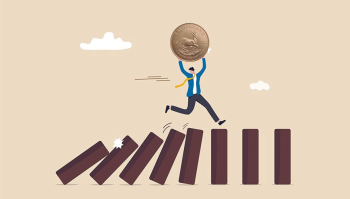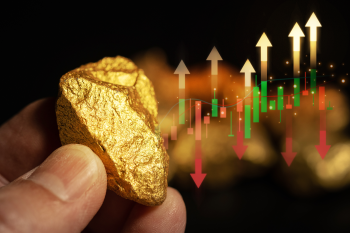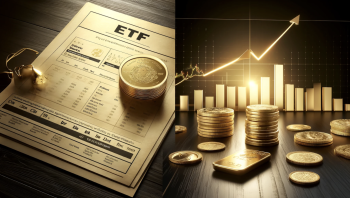
The yellow metal began 2023 at 1,700.7 euros/ounce and closed the year at 1,868.6 euros/ounce, an annual performance of +9.9%
Source: tradingview
Gold twice hit its March 2022 high of 1901.8 euros, in late October and early December. On Monday December 4, 2023, it even entered uncharted territory, setting a new all-time high at 1968.5 euros, before retracing its steps the same day to return below historical resistance around 1900 euros/ounce.
Geopolitical tensions
In Ukraine, Kiev's counter-offensive has failed and Russian forces have gained ground against an ammunition-starved Ukrainian army awaiting further aid from the West. Russian strikes intensify in retaliation for the Ukrainian army's bombardment of the Russian city of Belgorod. On October 7, 2023, Hamas launched an attack on Israel, to which Israel retaliated with aerial bombardments followed by ground operations in the Gaza Strip. Gold gained +9.8% in October alone, playing its role as a safe-haven asset whenever the international context becomes tense. On January 1, 2024, the BRICS (Brazil, Russia, India, China and South Africa) welcomed five new members: Egypt, Ethiopia, Iran, Saudi Arabia and the United Arab Emirates. With ten members, the BRICS account for half of the world's oil production, and this will naturally increase their influence on the world stage.
Interest rates
After a brutal series of rate hikes since June 2022 and levels not seen since 2001, the European Central Bank (ECB) has announced a pause.
Source: tradingeconomics
The markets are waiting for rates to fall after central banks make such an announcement, but the rise in inflation in December 2023 could frustrate their short-term expectations. The problem with high rates is that they make debt repayment more difficult and, in an already difficult economic climate, could lead to recession and a succession of defaults.
Inflation
Despite a sharp fall in inflation in the eurozone, the yellow metal outperformed last year's performance (+9.8% vs. +5.9%).
Source: tradingeconomics
Moreover, we are seeing a rebound in inflation in December 2023, estimated at 2.9% by Eurostat, the European Union's statistical office (versus 2.4% in November). Among the main components of eurozone inflation, food, alcohol & tobacco is expected to record the highest annual rate in December (6.1%). Also, inflation remains higher in some parts of Europe: Germany (3.8%), France (4.1%), Austria (5.7%) for December 2023. So, the problem is not solved and we are still caught between a rock and a hard place: raising interest rates slows down the economy and may lead to a recession, lowering rates raises inflation.
Central banks
Meanwhile, central banks continue to accumulate gold. In the first nine months of 2023, central banks bought 800 tonnes of gold. A record! This represents a 14% increase over the same period in 2022. China was by far the biggest buyer of gold in Q3 2023, with 181 tonnes accumulated since the beginning of the year.
Source: World Gold Council
Note: 4th quarter 2023 purchases should be added to the above chart.
What to expect in 2024?
J.P. Morgan, America's largest bank, forecasts a rise in gold towards mid-2024, peaking at $2,300 on the back of lower rates. The Swiss bank UBS predicts a price of 2150 dollars by the end of the year if the rate cut materializes. For analysts, the Middle East conflict, uncertain elections in several countries around the world and central bank buying led by China will intensify gold's appeal as a safe-haven asset in 2024. Not to mention the intractable problem of recession, interest rates and inflation in the eurozone.
>>> A period of great uncertainty that could benefit the yellow metal in 2024.




